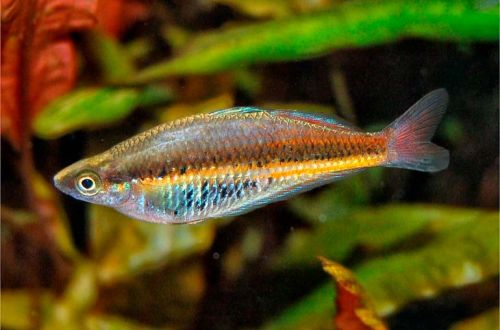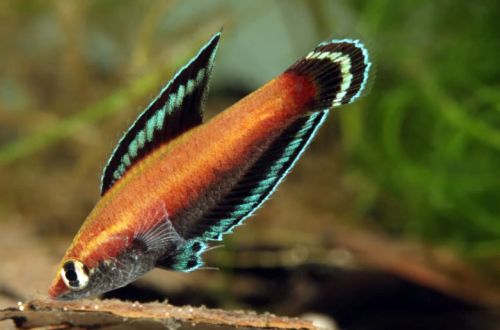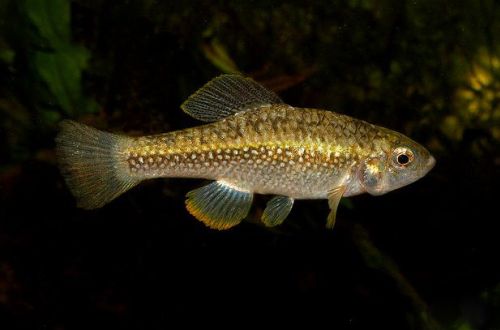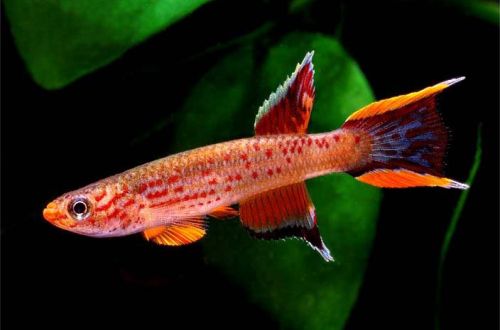
Rainbow Ramu
Ramu’s rainbowfish, scientific name Glossolepis ramuensis, belongs to the Melanotaeniidae (Rainbowfish) family. The fish comes from the island of New Guinea. Inhabits the basin of the Ramu River in the northeastern part of the lake. A typical biotope is a clear stream with a gravel substrate and a few aquatic plants. Probably, depending on the season, habitat conditions change. The New Guinea Rainbow was also found in the same biotope.

Description
Ramu’s iris is closely related to the Spotted iris in terms of size and some similarities in coloration. Adults reach a length of about 6 cm. The color of the back varies from greenish-brown to purple. On the sides along the lateral line are orange stripes. Belly with a bluish tint and a few black dots, usually about a dozen. As they get older, the spots become less noticeable.
It is worth noting that this coloration is primarily characteristic of males. Females look less colorful.
Behavior and Compatibility
Peaceful moving fish. It gets along well with relatives and other species of comparable size and temperament.
Sharing with slow fish should be avoided, as the faster Rainbows will win the competition for food.
Brief information:
- The volume of the aquarium – from 60 liters.
- Temperature – 24-28°C
- Value pH — 7.0–7.8
- Water hardness – medium to high (12-20 dGH)
- Substrate type – any
- Lighting – subdued
- Brackish water – no
- Water movement is weak
- The size of the fish is up to 6 cm.
- Meals – any
- Temperament – peaceful
- Keeping a flock of at least 6-8 individuals
Maintenance and care, arrangement of the aquarium
The optimal size of the aquarium starts from 60-80 liters for a flock of 6-8 individuals. The design is arbitrary, provided that there are free areas for swimming and several places for shelters. The latter can be thickets of plants, including floating ones.
With long-term maintenance, it is important to maintain a stable water composition. A comfortable environment is water of medium hardness with neutral or slightly alkaline pH values.
Maintenance of the aquarium is standard and does not differ from that when keeping other freshwater fish. Mandatory procedures include: weekly replacement of part of the water with fresh water, removal of organic waste and preventive maintenance of equipment.
Food
Undemanding to the diet. Will accept most popular dry, freeze-dried, frozen and live foods.





